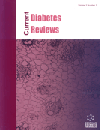
Full text loading...
We use cookies to track usage and preferences.I Understand
Renal disease in T2DM could arise independently of hyperglycemia, aka non diabetic kidney disease. Its prevalence ranges from 33% to 72.5% among T2DM patients. Specific molecular signatures that distinguish Diabetic Nephropathy from NDKD (FSGS) in T2DM might provide new targets for CKD management.
Five original GEO microarray DN and FSGS datasets were evaluated (GSE111154, GSE96804, GSE125779, GSE129973 and GSE121233). Each of the three groups (DN, FSGS, and Controls) had equal renal transcriptome data (n=32) included in the analysis to eliminate bias. The DEGs were identified using TAC4.0. Pathway analysis was performed on the discovered genes aligned to official gene symbols using Reactome, followed by functional gene enrichment analysis using Funrich, Enrichr. STRING and Network analyst investigated PPI, followed by Webgestalt's pathway erichment. Finally, using the Targetscan 7.0 and DIANA tools, filtered differential microRNAs downregulated in DN were evaluated for target identification.
Between the three groups, DN, FSGS, and Control, a total of 194 DEGs with foldchange, >2 & <-2 and P-value 0.01 were found in the renal transcriptome. In comparison to control, 45 genes were elevated, particularly in DN, whereas 43 were upregulated specifically in FSGS. DN datasets were compared to FSGS in a separate analysis. FABP4, EBF1, ADIRF, and ART4 were shown to be among the substantially up-regulated genes unique to DN in both analyses. The transcriptional regulation of white adipocytes was discovered by pathway analysis.
The molecular markers revealed might be employed as specific targets in the aetiology of DN, as well as in T2DM patients' therapeutic care.

Article metrics loading...

Full text loading...
References


Data & Media loading...
Supplements

